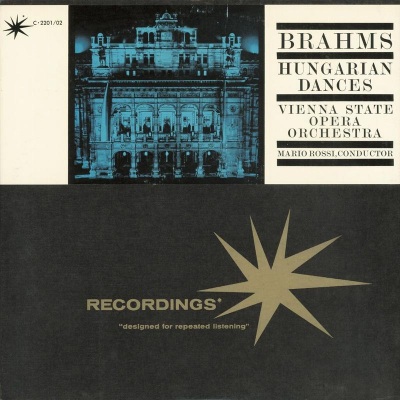
Brahms: Hungarian Dances
Brahms was barely twenty, making his living by teaching and accepting odd piano engagements, when he became accompanist to the noted Hungarian violinist Edouard Reményi. It was during his extensive tours with Reményi, an exciting interpreter of the music of his native country, that Brahms developed a fascination for Hungarian folk music. Many of his later compositions notably his Piano Quartet, Op. 25, the Violin Concerto, Op. 77 and the Gypsy Songs, Op. 103 reflect this influence, but none better than the four volumes of 'Hungarian Dances,' written between 1852 and 1869. Originally, this collection included 21 settings for piano duet a form of music-making which was a gighly popular type of entertainment for professionals and amateurs alike in those days. Later, as these settings became successful and a demand for them arose from orchestras and instrumentalists of every description, Brahms himself provided orchestral settings for Dances Nos. 1, 3 and 10. His good friend, Antonin Dvoák, who shared Brahm's appreciation of folklore, orchestrated Nos. 17 to 21, and other orchestral settings were created by Albert Parlow and Andreas Hallén. The material contained in these Dances is based on popular Hungarian melodies of the early 19th century some of folk origin, others by composers writing in the national style. Undoubtedly, Brahms composed some original melodies but the extent of his own contribution is unknown it was his publisher rather than Brahms himself who initially represented these Dances as Brahm's original creations. Be that as it may, their worldwide popularity is largely due to the skillful settings and appealing harmonic dress Brahms devised for them. At the same time, Brahms could hardly fail with this material. This is truly popular music. The listener is charmed by its essential simplicity, sponaneous appeal, and its haunting, bitter-sweet strains. In the characteristic rhapsodic spirit of Hungarian folk-music, melancholy slow melodies alternate with bursts of fiery dances all bearing the Gypsy flavor which thoroughly permeated the only Hungarian music Brahms knew, long before 20th Century folk research threw entirely new light on the subject. Fourteen of Brahm's Hungarian Dances are included in this album. The Vienna State Orchestra, one of the world's most eminent musical bodies, is under the direction of Mario Rossi, the internationally celebrated director and principal conductor of the Turin Opera.
